SouthPark Mall takes root and rises
In the early 1960s, Charlotte's Belk and Ivey families joined forces to develop a new regional mall on former farmland at Sharon and Fairview Roads.
Their plan focused on a single enclosed space that would combine department stores, local shops, and modern parking. The partners secured part of the old Morrocroft estate, once owned by Governor Cameron Morrison.
Architects designed a clean white brick structure with a low modern profile and an underground parking deck that matched the new city aesthetic.
By 1969, crews were finishing the million-square-foot frame while merchants prepared to move in.
Leasing focused on three anchors: Belk, Ivey's, and Sears, each bringing established customer bases and guaranteed traffic to the new center.
The city turned out in force as Charlotte's largest retail project came to life.
In one move, farmland had become a commercial district, and a new standard of indoor shopping had begun to shape the region's economy.
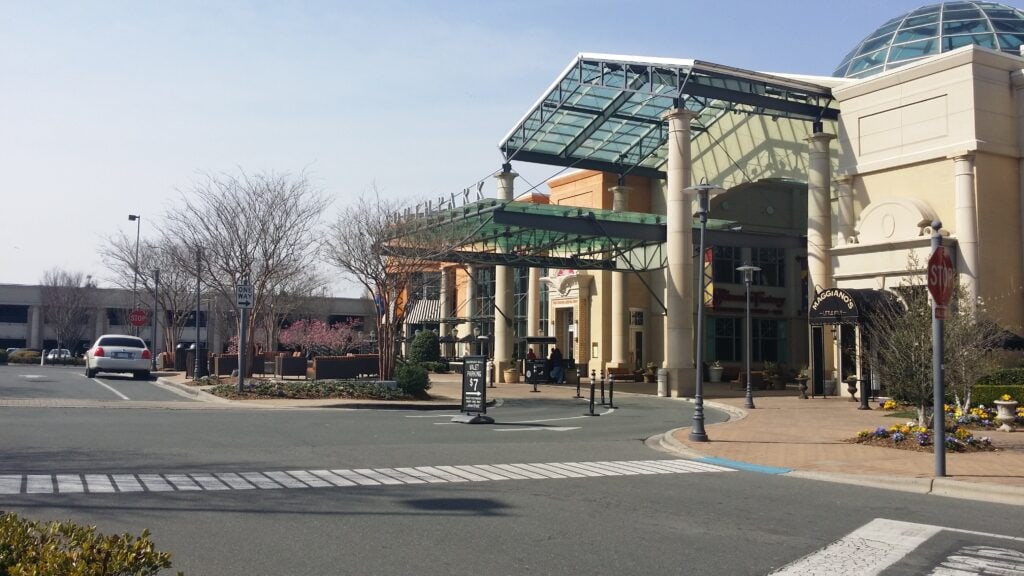
Doors open, and the center finds its stride
SouthPark Mall opened on February 12, 1970. Belk, Ivey's, and Sears were the first anchors.
The building covered about a million square feet, with white brick walls, terrazzo floors, and wide indoor walkways that linked the three stores.
Shoppers could park, step inside, and stay out of the weather while moving between departments.
That summer, a smaller group of stores went up behind Sears. It included a grocery store and some offices.
On August 21 of the same year, SouthPark Cinemas I & II started showing films next to the complex.
People came to shop in the day and returned at night to see movies, turning the area into a steady gathering spot.
By 1973 or so, there was no space left unclaimed.
Belk and Ivey's joined forces for seasonal sales, Sears held its steady pull from the city, and the skylights kept the interior washed with light.
Most regulars arranged to meet under the clock at the heart of the atrium.
By the middle of 1974, SouthPark Mall was packed and profitable.
The mall had woven itself into everyday routines across the city, right as another fresh development began to position itself for the same shoppers.
Competition arrives, and a fourth anchor lands
Eastland Mall came along in 1975, all new glass and concrete, just 7 miles from SouthPark Mall.
Everyone had to check it out.
SouthPark's traffic slipped, a little bruised ego maybe, but it didn't take long before the regulars were back.
Belk and Ivey's went in for renovations, brightening the interiors and turning over their displays with each season.
Being enclosed and sitting close to long-established neighborhoods gave the mall enough weight to stand firm as the suburbs filled with new malls.
Through the early 1980s, the property stayed fully leased.
Sears continued selling its regular range of home goods, clothing, and appliances while smaller retailers came and went on the side wings.
The people running SouthPark Mall concentrated on maintenance, fixing lights and floors, and adding small touches that kept the 1970 setup useful.
A major change came in 1988 when construction began on a new anchor space for Thalhimer's.
The addition added retail square footage and a fourth department store to the lineup.
Four years later, the store converted to Hecht's after a company merger, giving the mall another national name.
In 1990, Dillard's entered Charlotte by buying the Ivey's chain and taking over its SouthPark Mall location.
By 1992, all four anchor spaces were occupied and performing, setting the stage for a broader ownership shift to follow.

Ownership shuffle and a luxury pivot takes shape
In 1995, Belk became SouthPark's sole owner by buying Ivey's share, clearing the way for new investment.
One year later, Belk sold the property to Rodamco, a Dutch real estate trust with a focus on upscale assets.
Rodamco's team began evaluating expansion and renovation options to increase long-term value.
When Simon Property Group acquired Rodamco's U.S. portfolio in 2002, SouthPark Mall fell into the hands of one of the largest mall operators in the country.
Simon moved quickly to advance a redevelopment plan already in discussion with city planners and tenants.
The early 2000s brought a complete physical transformation.
Belk's store underwent a major renovation, while Hecht's expanded its footprint ahead of a later transition to Macy's.
In 2003, Sears closed, and its former site was cleared for an outdoor plaza with a Galyan's sporting goods store, which soon became Dick's Sporting Goods after a corporate buyout.
A luxury wing opened in 2004 with Nordstrom as its anchor, followed by Neiman Marcus in 2006.
Multiple parking decks were added to support higher traffic volumes.
By that year's end, SouthPark Mall had recast itself as a luxury shopping center with a national profile.
Public space, transit, and mixed-use broaden the offer
The redevelopment went further than the main structure.
In 2002, the former convenience center was converted into Symphony Park, an open-air venue that began hosting the Charlotte Symphony's Summer Pops concerts along with other community celebrations.
The buses came in 2004, rolling into the SouthPark Community Transit Center built beneath the parking deck.
The change gave the property new life as a crossroads for people working and shopping across Charlotte.
Developers next turned their attention to the surrounding parcels.
The Village at SouthPark, a mixed-use project anchored by Crate & Barrel with apartments above, opened nearby, bringing residents and daily foot traffic to the district.
In 2007, a partial collapse in a parking deck wall near Nordstrom required repairs but did not close the structure.
The incident led to structural reinforcement and safety improvements.
By 2010, Joseph-Beth Booksellers in the plaza closed, and The Container Store opened in August 2011, continuing the shift toward lifestyle and home retail.
By the middle of the 2010s, SouthPark Mall had turned into more than stores.
It felt like its own little city now, waiting for the next rebuild to keep up with the money pouring in.
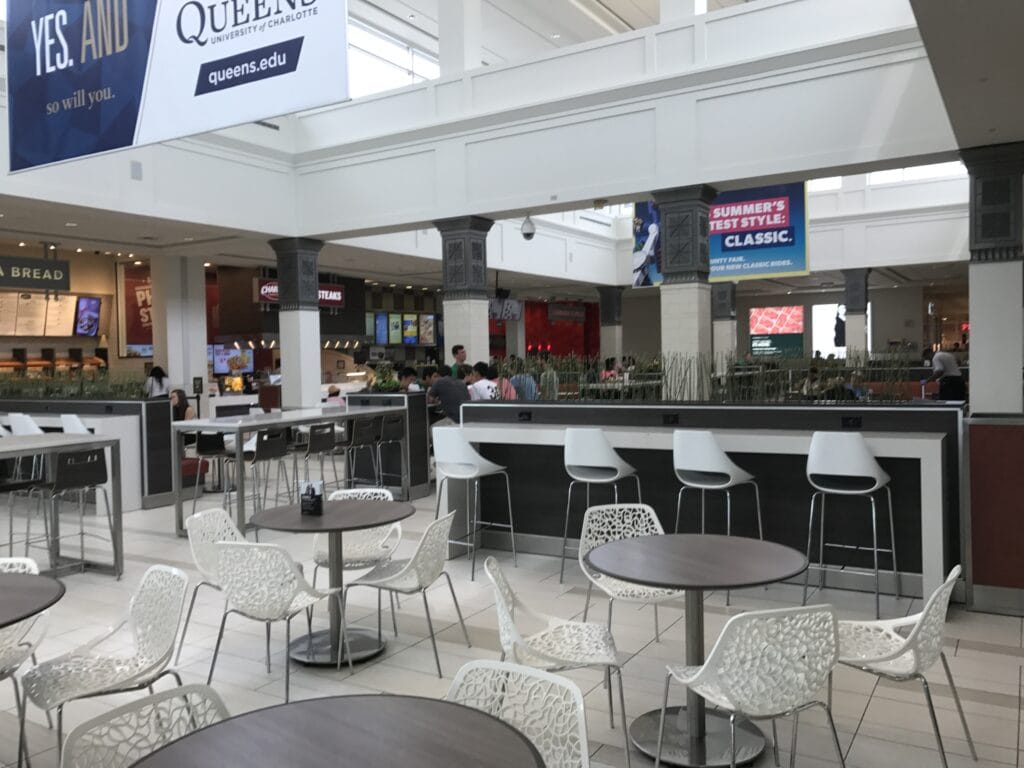
Premium brands deepen the mix, and plazas get updates
In 2020, SouthPark Mall began another round of changes that altered how the property looked and operated.
New tenants opened between Nordstrom and Neiman Marcus, including Gucci, Saint Laurent, and Alexander McQueen.
The crews came out after hours. Paper over the glass, lights inside. The noise of tools spilled into the corridor.
Each store finished adding another bright face to the high-end wing until the old one was gone.
A year later, Simon Property Group announced plans to rebuild the West Plaza.
The first thing they did was gut the old California Pizza Kitchen.
In its place came a brewery, an open stage, and a family play area.
Construction crawled along in sections so the rest of the mall could keep moving.
When it was done, there were benches, some landscaping, and new lights that made evenings easier to stick around for.
Through 2022 and 2023, new leases filled smaller units with fashion and lifestyle tenants while restaurants extended patios into the updated plaza.
The combination of indoor and outdoor activity gave SouthPark Mall more public use than at any time in its history.
By late 2023, construction fences came down, and the plaza reopened with live music and steady weekend crowds.
The refreshed space closed one redevelopment phase and prepared the mall for another expansion already planned for the coming year.

Tenant churn and park funding reshape the near-term
Zara announced on June 17, 2024, that it would open its first North Carolina store at SouthPark in 2026 beside Belk, joining the list of major global retailers locating in Charlotte.
On February 17, 2025, American Girl closed its store, ending a long run that had started more than a decade earlier.
That spring, the Charlotte City Council reviewed plans for a $21 million renovation of Symphony Park.
The design included a new entry plaza, expanded seating, two restaurant buildings, restrooms, and retail spaces.
In June 2025, a $1.5 million naming gift from TowneBank brought total private funding to 83 percent, confirming construction for 2026–2027.
In September 2025, Simon Property Group announced seven new tenants, among them Reformation, Boll & Branch, Mizzen+Main, New Balance, Quay, CAMP, and Suitsupply.
CAMP opened on September 26 with an immersive family attraction tied to Gabby's Dollhouse.
SouthPark Mall is still in good shape. Stores are open, lights work, and the place feels clean.
The walkways look cared for, not fancy but steady.
Most of the new high-end shops fit in fine next to the older ones.
It can get crowded on weekends, and parking takes a little patience, but it's organized once you're inside.

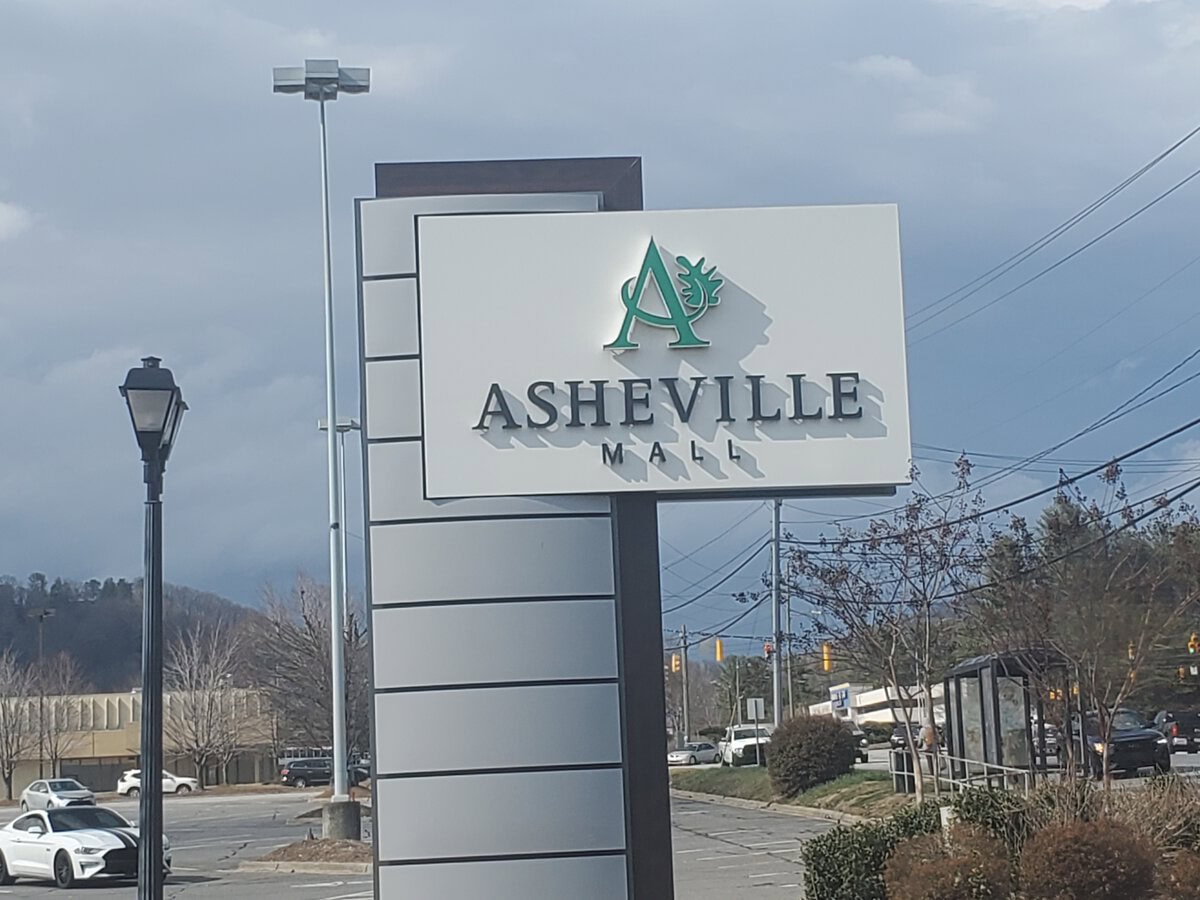

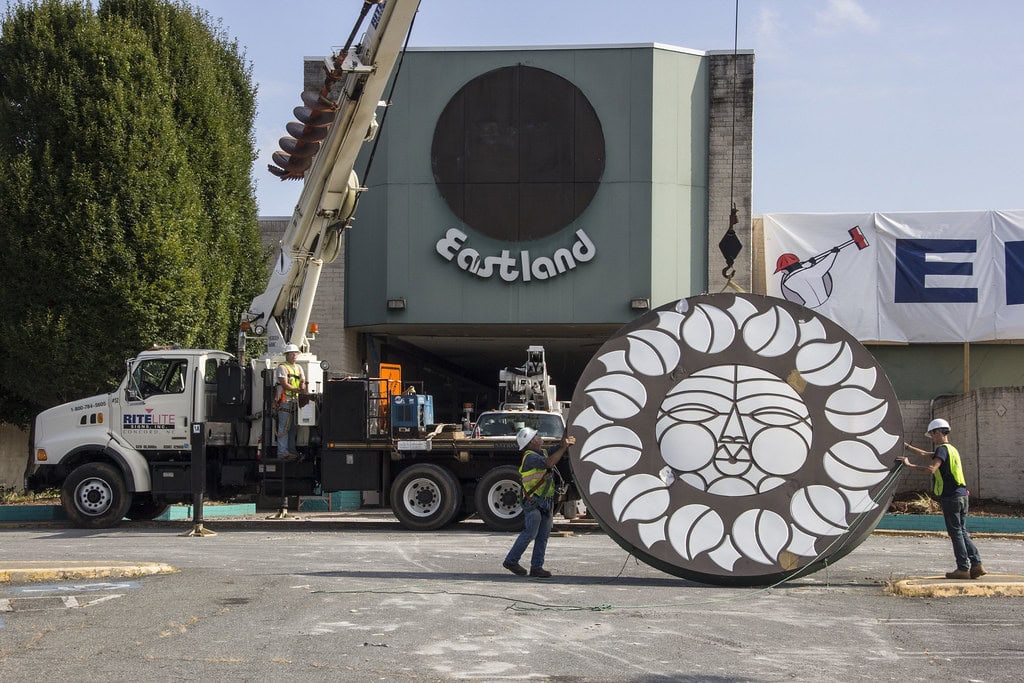

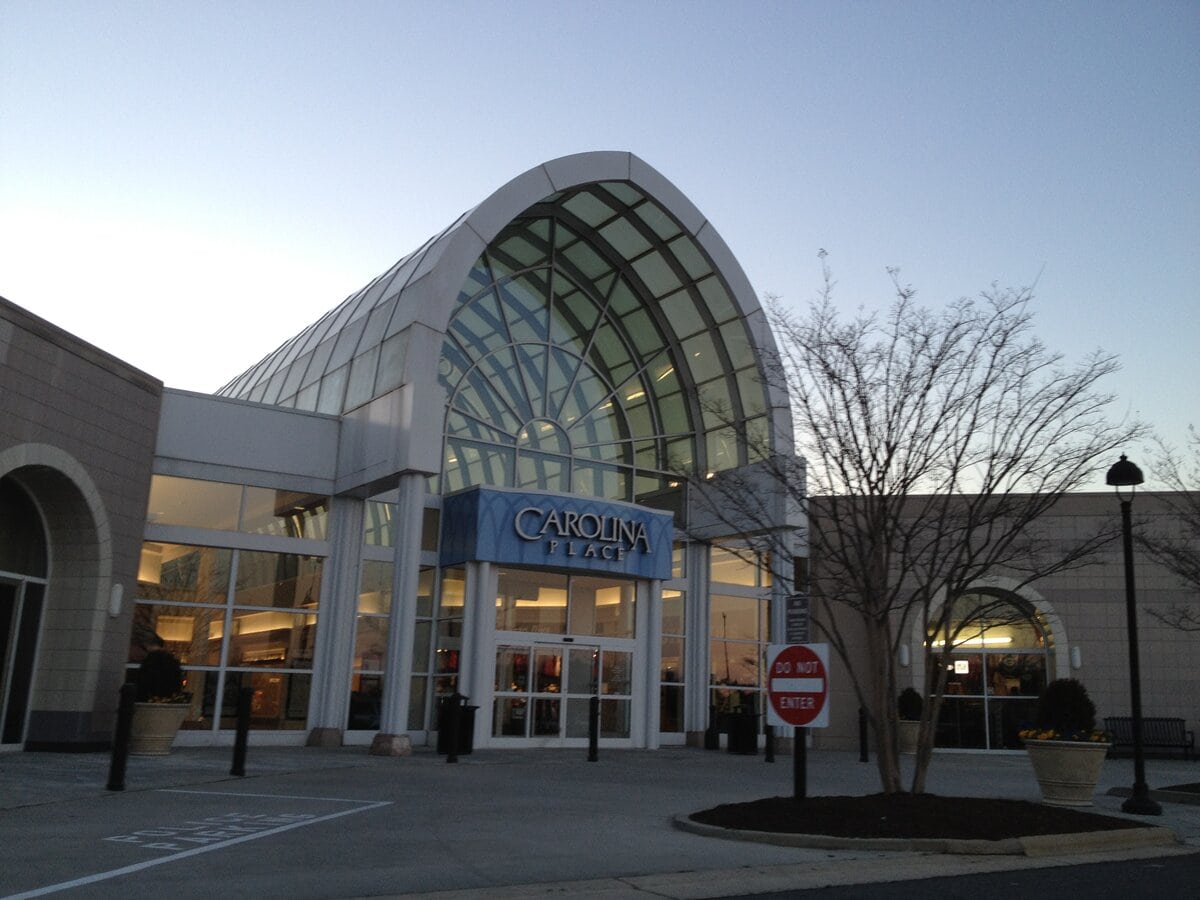
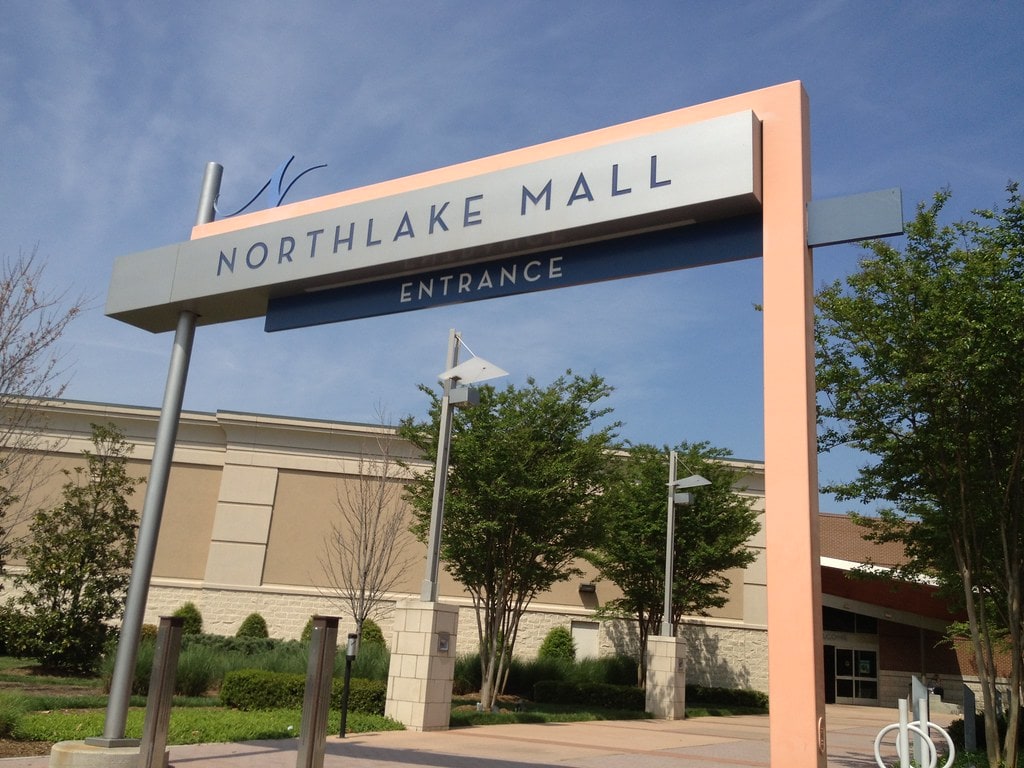
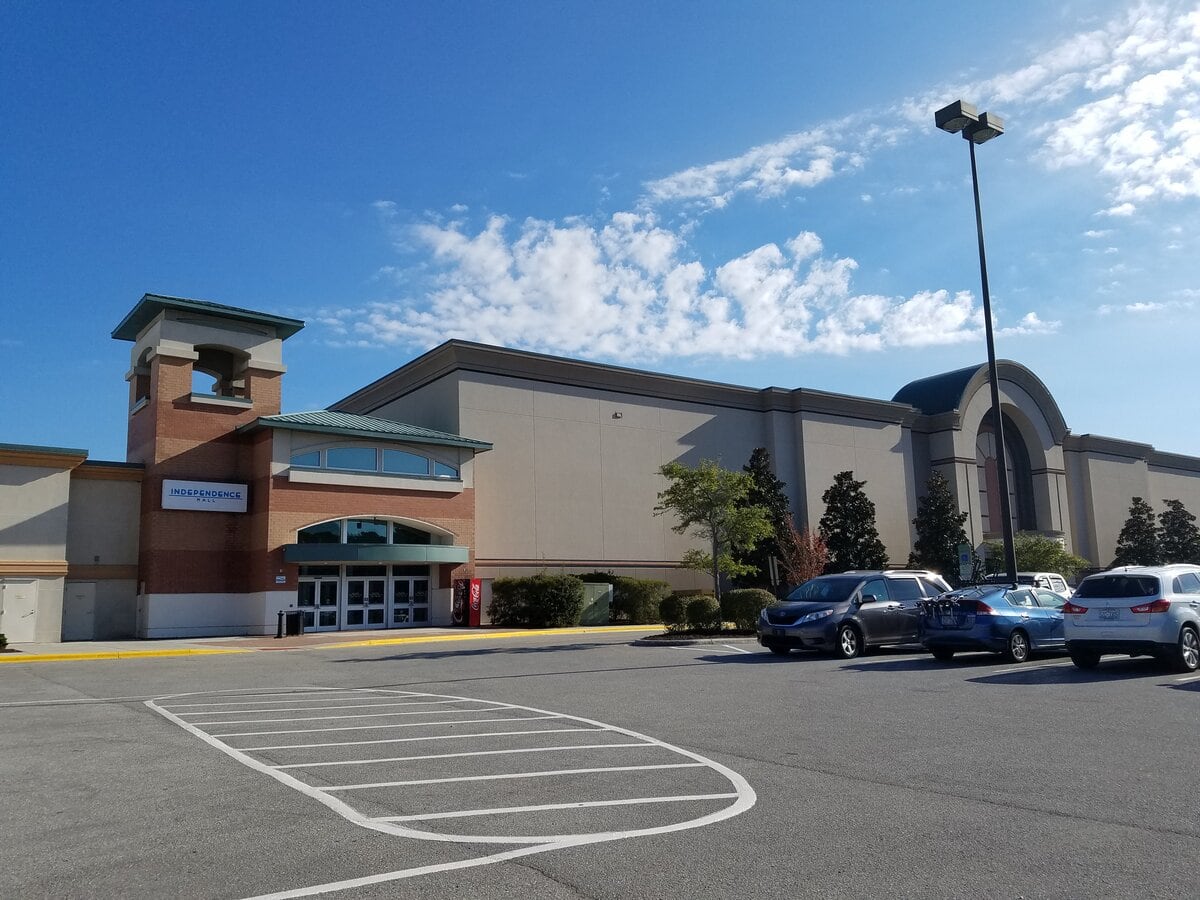
I enjoyed this article Spencer Walsh. I have memories of going to South Park Mall that I will cherish.
I’m so glad you enjoyed the article! It’s wonderful that SouthPark Mall holds such special memories for you. Thanks for sharing.
I cannot wait to visit SouthPark in 2026 and especially check out its four level Belk. Hopefully, Charlotte and the South in general is better off with Macy's, just like in my hometown Miami-Fort Lauderdale-West Palm Beach, as I was raised thinking of this retailer being national rather than a company based in New York City and operating only on affluent US coasts.
That four-level Belk is basically the whole point of going. It's one of the few anchors that still feels like a real flagship.